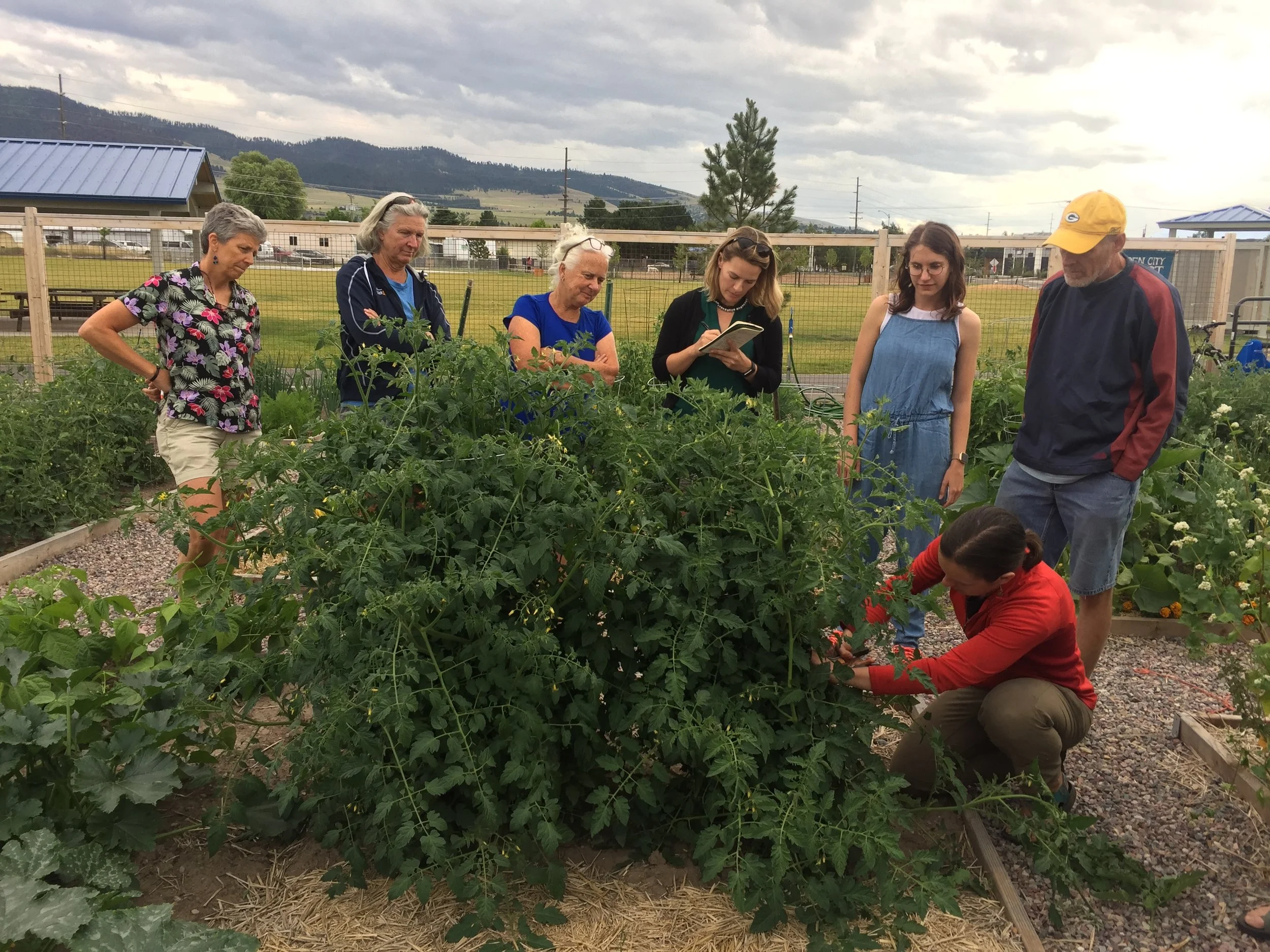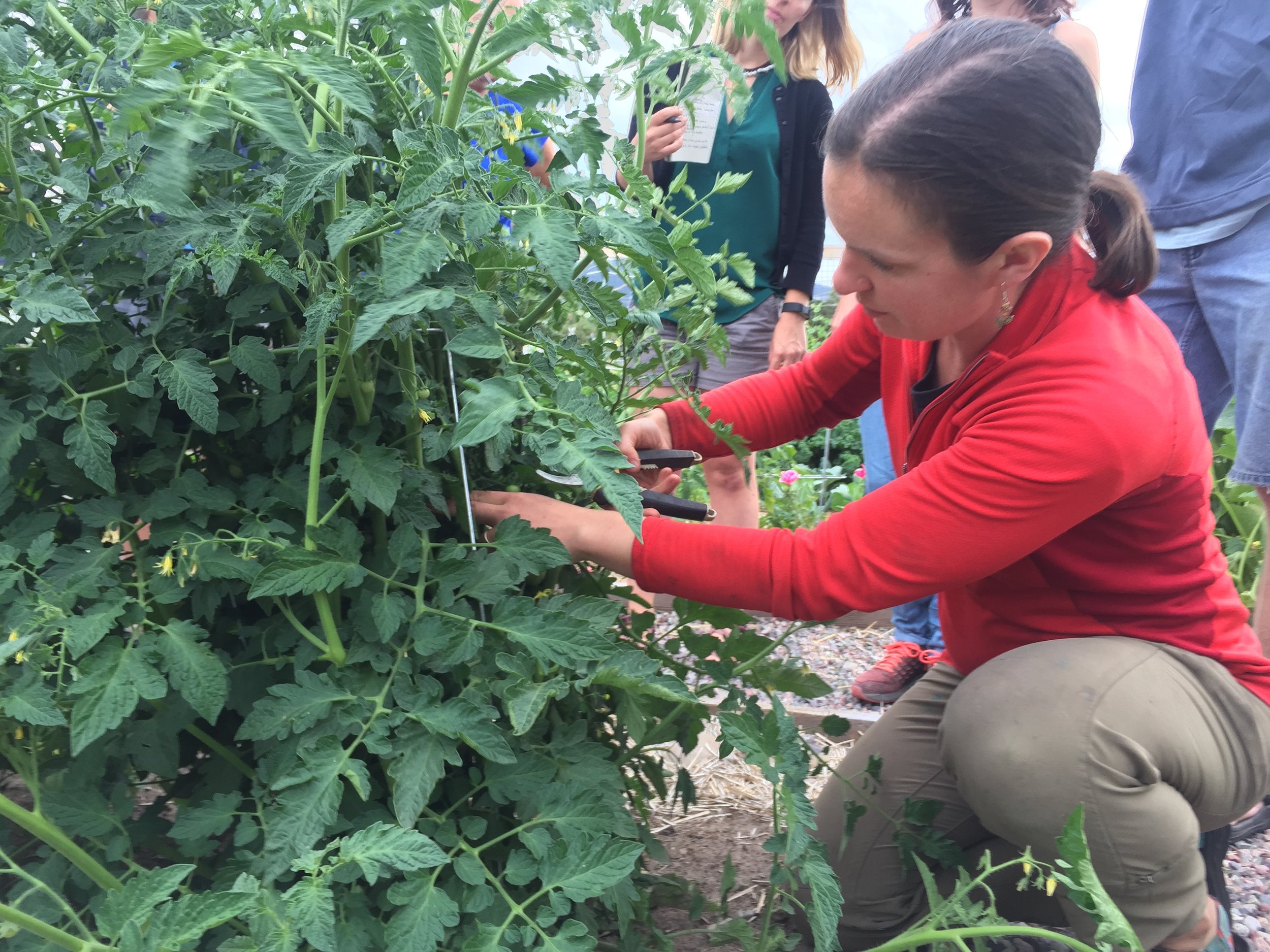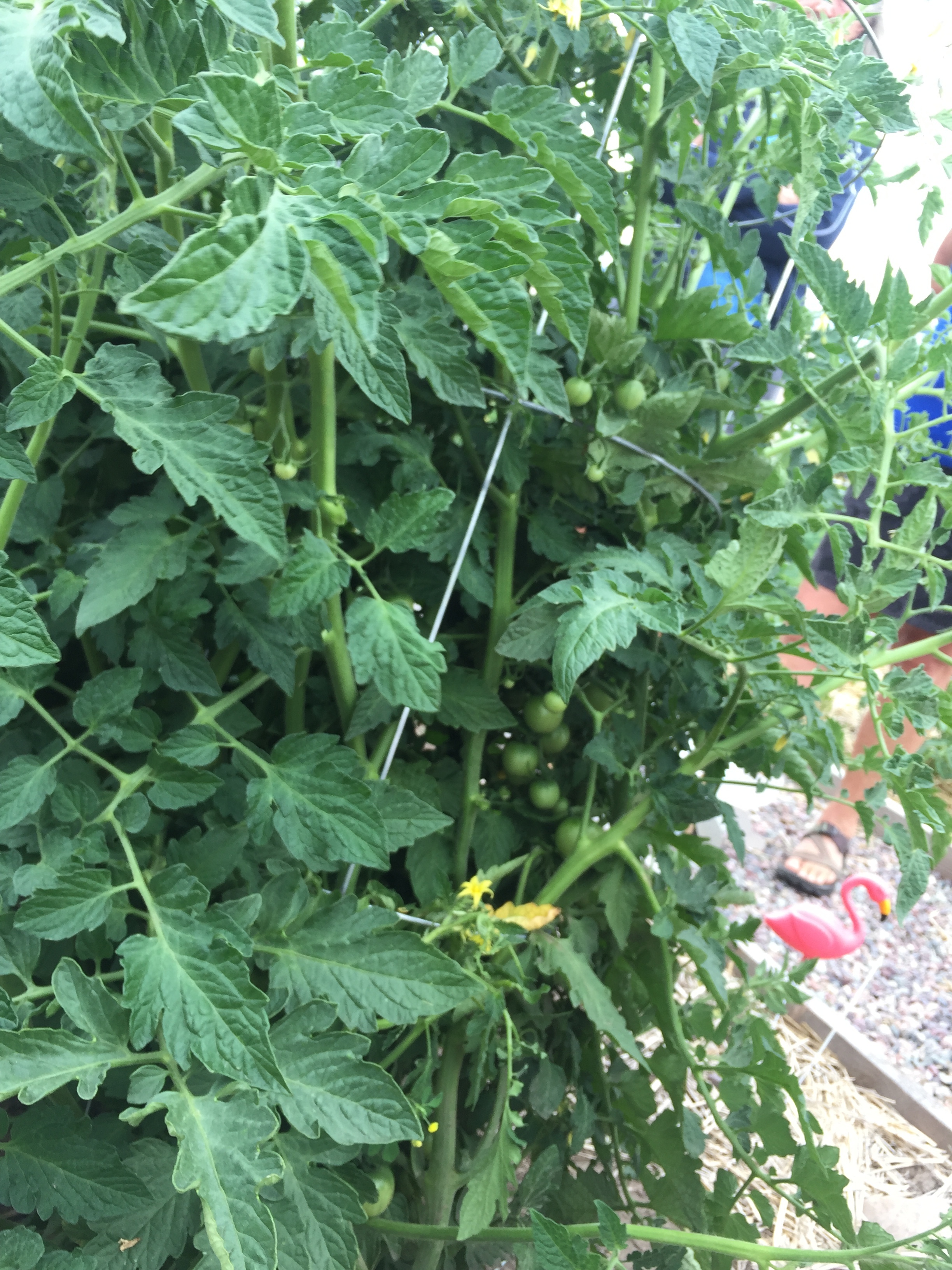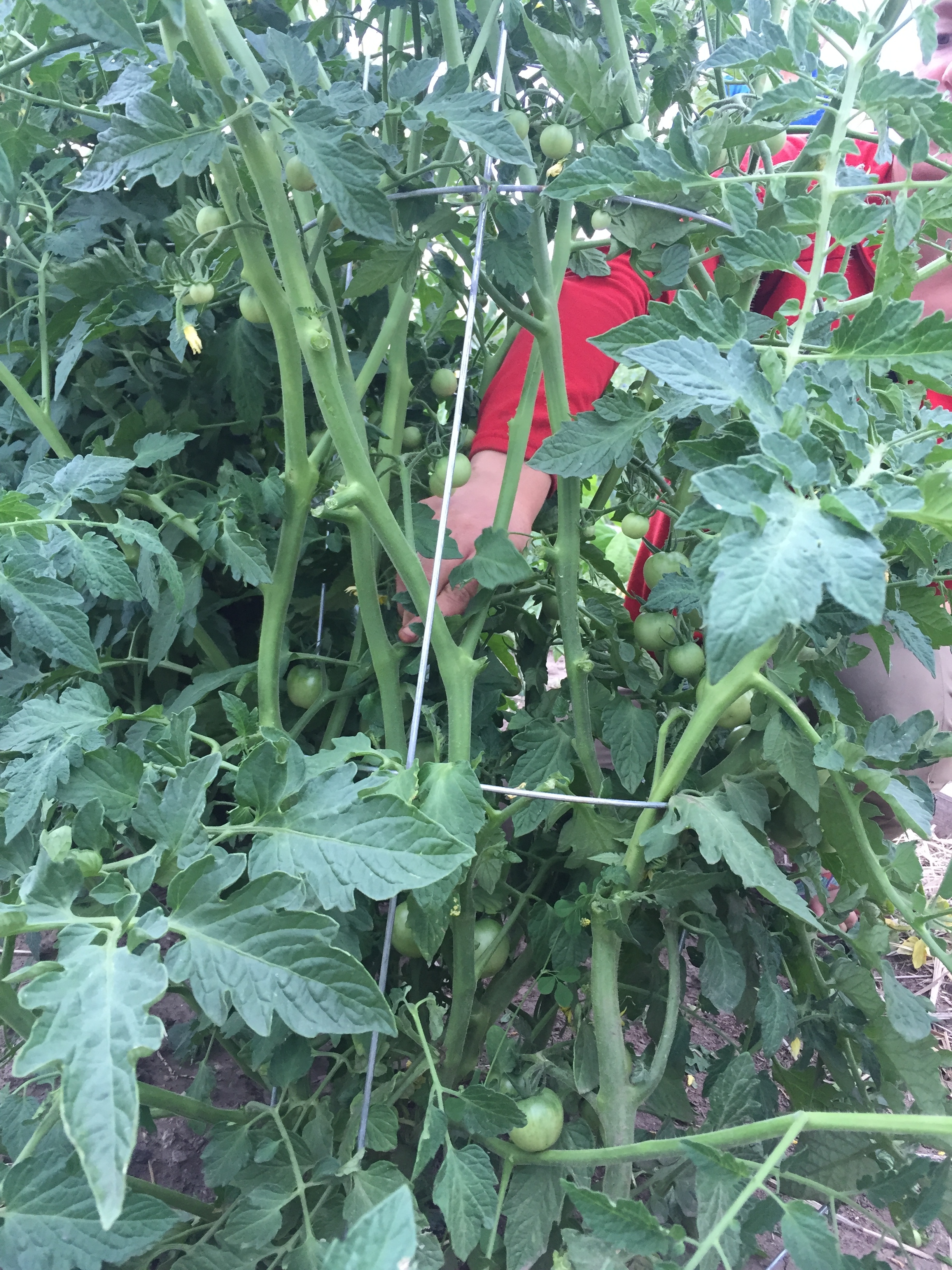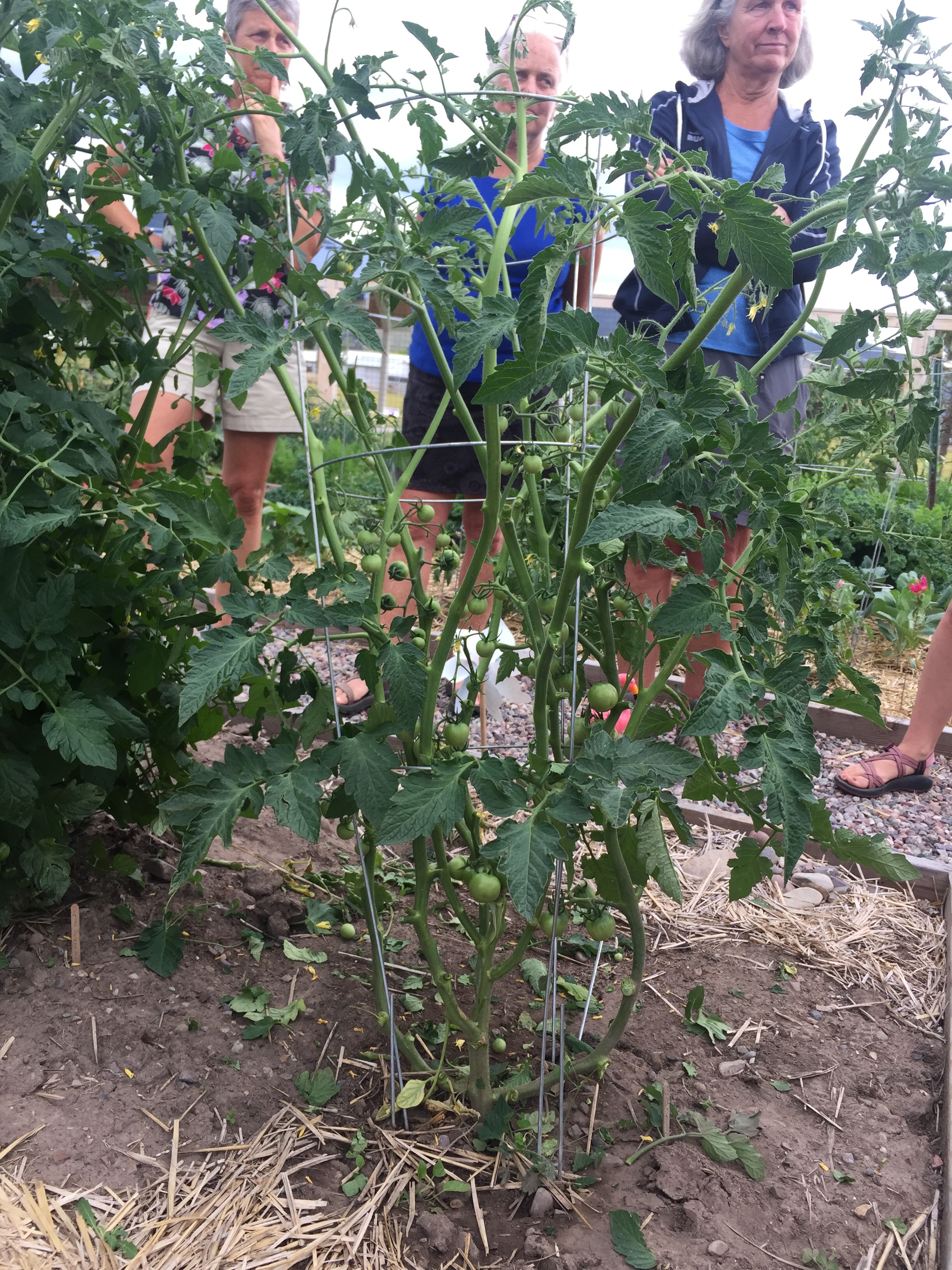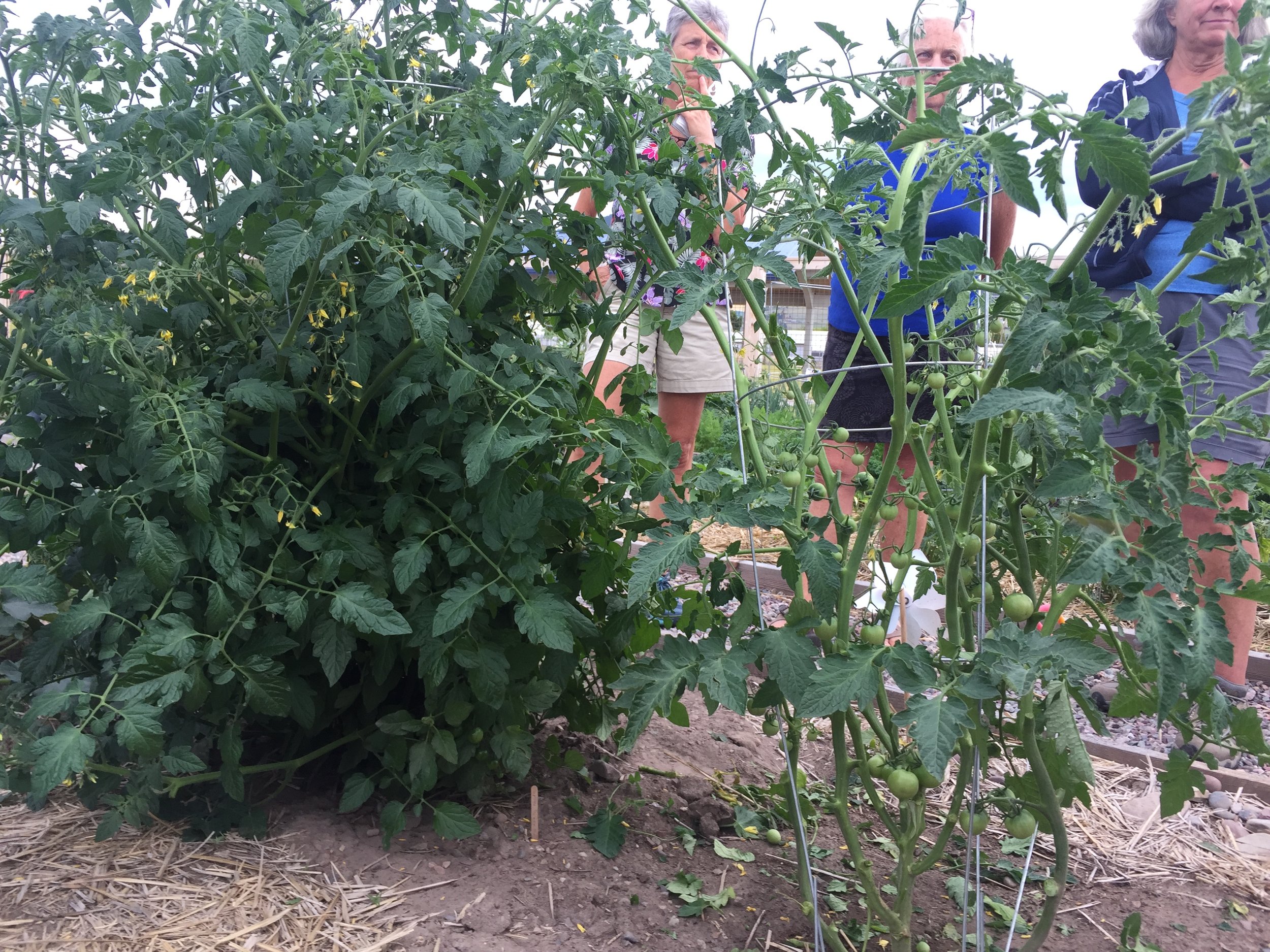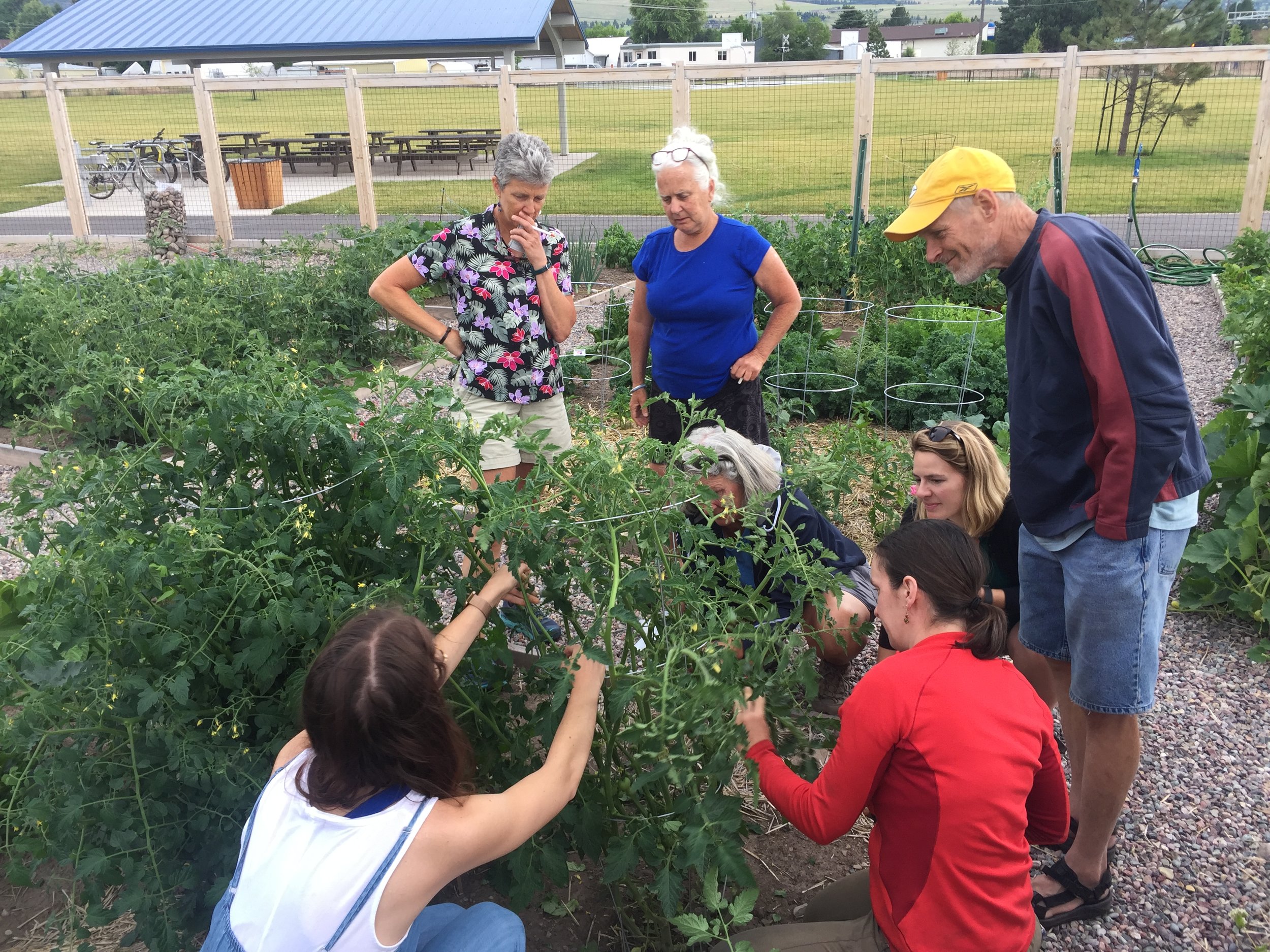Pruning Tomatoes - Get in There!
It’s a jungle in there! Although it can be intimidating, pruning tomato plants improves air circulation and the rate at which fruit ripens.
We had a Tomato Workshop last Wednesday night that focused on how to prune tomatoes - something that I think many of us have heard of but never really understood…I mean, for starters…why? how? where? when do you prune tomatoes….?
For those that missed last night’s workshop with Stasia Orkwiszewski, UM Dining’s Garden Manager, we’ll cover the basics here.
What?
Before beginning to prune a tomato plant, one must know if it is determinate or indeterminate type of tomato. Since indeterminate tomatoes are what need pruning, that’s the type of tomato we will be referring to in this blog. The best way to know if your tomato plant is determinate or indeterminate is to know the name of the variety. When you buy your tomato plant, most plant tags will say “determinate” or “indeterminate” next to the variety name. If the plant tag is long gone, you’ll need to look it up online because it is really difficult to determine if a tomato is determinate or indeterminate just by looking at it.
DETERMINATE vs. INDETERMINATE:
A determinate tomato (also called bush tomatoes) grows to one size, sets its fruit over a couple weeks, ripens, and is done for the season. These varieties are great for canning and preserving since you will get your entire harvest all around the same time. Stasia only prunes early flowers off her determinate tomatoes to focus the energy of the plant on getting big and tall and not on fruit production in June. After putting a simple trellis or tomato cage around her determinate tomato plants, she mostly lets them be for the remainder of the season.
An indeterminate tomato, or vine-type tomato, grows and shoots new flowering tops and fruits all season long (up until frost). The plant grows infinitely taller and produces fruit over a longer period of time. An indeterminate tomato needs pruning and greater structure via staking or trellising throughout the growing season. Most cherry and heirloom tomato varieties are indeterminate.
Why?
Just like pruning a fruit tree helps keep the tree healthy (improving air circulation, removing damaged or diseased branches, increasing the amount of sunlight reaching the inner leaves), pruning a tomato plant does the same. Additionally, pruning back much of the vegetation allows more sunlight to reach the fruits and therefore increases the rate at which the fruit ripens.
Different tomato experts have different ideas of how much to prune, but they will all agree that pruning is a must for healthy and abundant tomato harvests.
Where?
Pruning tomato plants is all about selecting your leaders, then nipping off suckers and removing extra vegetative branches (those without fruit).
Leaders are the branches of a tomato plant where all the growth of the plant is concentrated. In other words, the leaders are the growing tip of the plant that lead the direction of growth.
Suckers, or side shoots, are the thinner stems that grow straight up from the junction where a leaf meets the main stem. They start small, but left alone will grow as tall as a main leader.
How?
Choose 2 - 4 leaders and cut back all the other vegetative branches and suckers. The number of leaders depends on the space and trellising you have available. The more leaders means the plant will be bushier. The fewer leaders means the plant will be taller. Some farmers only select 1 leader for each plant and end up harvesting their ripe tomatoes from a ladder because the plant gets so tall!
Stasia recommends that community gardeners choose 3 - 4 leaders per plant. She also recommends that the selected leaders are growing outward, so they receive the maximum amount of sun. Remove any extra leaders that are growing inward.
Don’t forget to cut off any vegetative branches - which are those branches without any fruit or flowers.
Pruning Tip: Always cut the stem at a slight angle where the stem meets the main branch or a leaf node.
When?
Ideally, pruning starts as soon as the plant is in the ground.
Nipping off early flowers that appear in June is usually the first and simplest way to prune your tomato plant. This directs the energy of the plant towards getting bigger and fuller at the beginning of the season. A healthy robust tomato plant will later produce many more tomatoes than a small or spindly tomato plant.
Choose the 2 - 4 leaders for indeterminate plants as the plant grows and then check back regularly to cut off any suckers and diseased or damaged branches or leaves.
Stasia prunes her indeterminate tomatoes every couple weeks (“Or whenever I can get to it,” she says with a smile). Stasia stays busy as the garden manager of the University of Montana’s Dining Services two large garden sites.
At this point in the year, most people’s tomatoes may look like this photo above - big, bushy and not pruned. But it’s better to prune later than never. Although it can be intimidating to start, Stasia recommends to “just get in there and start cutting suckers and vegetative branches back.” Once you get in there, you’ll start to see your leaders and be able to pick your top 3 - 4, and cut everything else off. Also, keep in mind, that the more you do this, the more comfortable with pruning and “reading” your tomato plant you will become.
Believe it or not, pruning can be a very relaxing and fun activity!
See our progress with the tomato plants at the workshop below. Get in there!



